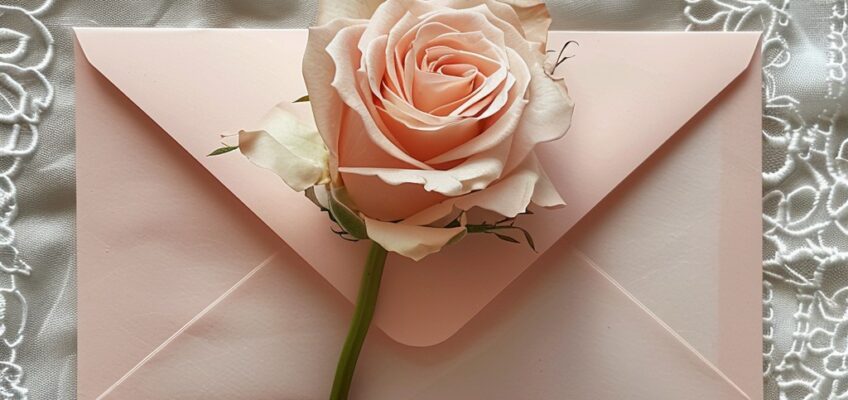Addressing envelopes correctly for different recipients requires attention to detail and consideration of their relationship to one another. Here are some guidelines:
Couples
When addressing an envelope to a couple, the traditional etiquette dictates using “Mr. and Mrs.” as the title, followed by the husband’s first and last name and the wife’s first and last name. For example:
Mr. John Smith and Mrs. Jane Smith
Alternatively, you may choose to use both individuals’ first names, which can add a more personal touch:
John and Jane Smith
Families
When addressing an envelope to a family, the parents’ names are typically listed on the first line, followed by the children’s names on subsequent lines. For example:
Mr. and Mrs. John Smith Samantha, Emily, and Matthew
Individuals
When addressing an envelope to an individual, use their full name and appropriate title. For example:
Ms. Sarah Johnson
Common Mistakes to Avoid When Addressing Wedding Invitations
While addressing wedding invitations, it is essential to avoid common mistakes that can lead to confusion or misunderstandings. Here are some mistakes to watch out for:
- Misspelling names – Always double-check the spelling of each recipient’s name to ensure accuracy.
- Using incorrect titles – Make sure to use the appropriate title, such as “Mr.,” “Mrs.,” or “Ms.,” based on the recipient’s marital status.
- Forgetting to include apartment numbers or building names – If applicable, include all necessary details to ensure the invitation reaches the correct address.
- Using abbreviations – Avoid using abbreviations for street names, cities, or states. Write them out in full for clarity.
- Neglecting to include return addresses – Always include your return address on the back of the envelope, in case the invitation cannot be delivered.
Etiquette for Addressing Invitations to Same-Sex Couples
Addressing invitations to same-sex couples follows the same principles as addressing heterosexual couples. The key is to use the appropriate titles, such as “Mr.,” “Mrs.,” or “Ms.,” based on each individual’s preferences and gender identity. For example:
Mr. John Smith and Mr. Michael Johnson
Alternatively, you may choose to use both individuals’ first names for a more personalized touch:
John and Michael
Tips for Addressing Envelopes with International Guests
When addressing envelopes to international guests, it is essential to consider cultural differences and customs. Here are some tips to keep in mind:
- Research local customs – If you have international guests, take the time to research the proper etiquette and addressing conventions for their country.
- Include the country name – When addressing envelopes to international guests, make sure to include the country name on the last line, below the city and state.
- Consider language preferences – If your international guests have a preferred language, consider including their names and addresses in that language for a thoughtful touch.
Using Calligraphy and Other Decorative Techniques for Envelope Addressing
Calligraphy and other decorative techniques can elevate the look of your envelope addressing, adding a touch of elegance and sophistication. If you have the time and artistic inclination, consider learning calligraphy yourself or hiring a professional calligrapher. Additionally, you can explore other decorative techniques such as embossing, foil stamping, or using custom-made stamps to create a unique and visually appealing envelope.
Mastering the etiquette of envelope addressing is an essential part of planning a wedding. From traditional rules to modern alternatives, there are numerous ways to address wedding invitations with elegance and style. So, as you embark on this exciting journey of wedding planning, remember that proper envelope addressing is the first step towards creating a memorable and unforgettable event.
For all your wedding stationery needs, visit our studio at www.mrsruthsbrides.com.


Leave a Reply